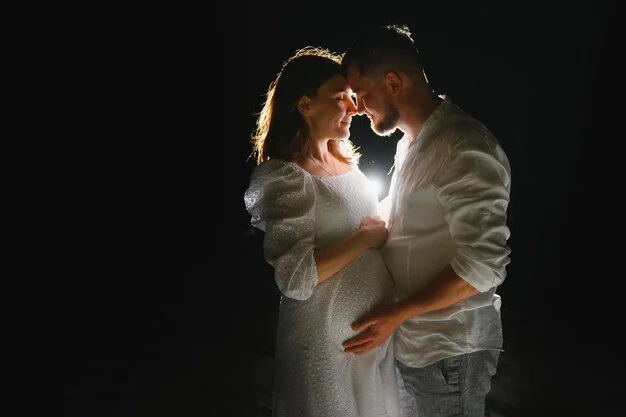I.
Reflecting on the early days of my pregnancy with Moxie, I find the memories to be a chaotic mix, almost like a whirlwind of moments crashing into one another, reminiscent of a powerful tide. This haze of recollection may stem from the events themselves or perhaps from the way my mind processes experiences – a result of the brain injury I suffered at the age of four. My memories often twist and turn in unexpected ways.
I vividly recall the day we saw our daughter for the first time. I was dressed in a black short dress with pirate sleeves from H&M, paired with black flared yoga pants. I had a fondness for that dress. I remember wishing I had cherry red lipstick, but I didn’t. My Earth moon boots were on my feet, much to Mikey’s dismay. On our way to the clinic, we passed a moss green Nissan Cube, and I noted that the weather was crisp and clear. At that time, I was about 10 weeks pregnant and 36 years old (I just did the math). This pregnancy had come after a painful second-trimester miscarriage.
We were headed to a specialized clinic for “high-risk” pregnancies. Upon entering the dimly lit room with the bright ultrasound machine, my belly was exposed and slick with gel. When we saw the flickering heartbeat of our baby, a wave of relief washed over us. But the technician’s silence and the long pause indicated that something was amiss. She left the room, only to return with the same perinatologist who had previously delivered the devastating news about my last child. My heart sank as I saw him, and I blurted out, “But the baby is alive! I can see the heart beating!”
He confirmed that yes, our baby was alive, but there were complications. He pointed out that her skin and body were distinctly separated, a condition known as diffuse fetal hydrops, where fluid accumulates beneath the skin. She also had heart holes, and he gave her a grim “0%” chance of survival. He suggested we consider an amniocentesis to identify the cause of the hydrops, not for her sake – as it was clear she was unlikely to survive – but for future pregnancies. Numb and heartbroken, we agreed and returned a few weeks later for the test.
II.
The amniocentesis revealed an extra chromosome and confirmed that we were having a girl. Miraculously, her diffuse fetal hydrops had resolved. Despite strong recommendations to terminate the pregnancy due to the Down syndrome diagnosis, we chose to continue. To be completely candid, my husband, Jake, was the one who insisted on keeping her, stating that we needed to “make the most of the hand we were dealt.”
In all honesty, I can’t say for certain that I would have made the same choice on my own. Having grown up with a hearing impairment, a brain injury, and scars on my face, I understood the challenges of living with a disability. I knew what it meant to be excluded and ridiculed. I had endured physical abuse, and I was aware of the statistics indicating that a significant percentage of people with disabilities face sexual abuse, particularly those with intellectual disabilities.
So, why would I consciously bring a daughter into this world, fully aware of the suffering I myself had endured? The choice to keep her felt like an act of selfishness, given my deep desire for her life.
III.
I harbored deep regrets about the amniocentesis and the knowledge that my daughter would have Down syndrome. The anxiety over our decision consumed me, resulting in countless sleepless nights. I replayed my own traumatic memories, questioning whether I had condemned my daughter to a life of pain. Fearful of Down syndrome and intellectual disabilities, I scoured blogs, memoirs, and articles, seeking comfort and understanding.
I envied those who received a birth diagnosis, believing they had the chance to grieve openly. I, on the other hand, could only embrace my moving belly, grappling with the shadows in my mind. But confronting my fears ultimately led to an important realization: my daughter’s life would be her own, distinct from mine. Her experiences and the way she would navigate the world would not mirror my own. As Kahlil Gibran so poignantly stated,
“Your children are not your children.
They are the sons and daughters of Life’s longing for itself.
They come through you but not from you,
And though they are with you yet they belong not to you.”
The grief that enveloped me during much of my pregnancy served a purpose: it stripped away distractions and left me with pure joy and appreciation for her existence.
Moxie Eleanor.
The light of our lives.
This article was originally published on Dec. 21, 2010.
For more information on pregnancy and home insemination, check out this excellent resource. If you’re looking to boost your fertility, consider these supplements from an authority on the topic. Additionally, visit our other blog post for more details about home insemination.
Summary: The author navigates the complexities of her pregnancy journey with Moxie, reflecting on her past experiences and the weight of decisions regarding her child’s future. Through introspection and acceptance, she finds joy in her daughter’s life despite the challenges posed by Down syndrome.
